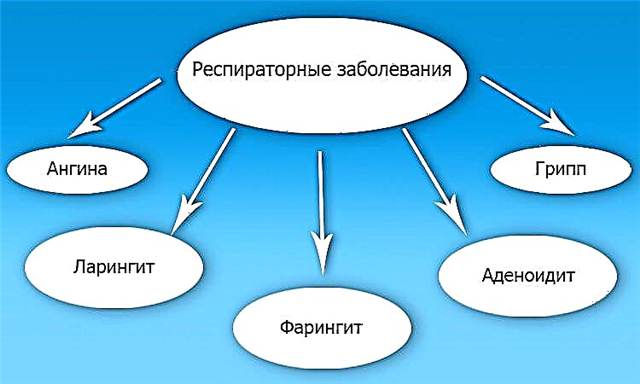All parents sooner or later face the appearance of coughing fits in children. Quite logical questions arise: how to quickly and safely eliminate cough, what means should be used in this case? A deaf cough in a child does not always indicate an illness. Quite often, this symptom is not pathological in nature and is a protective reaction of the body to an irritant - dust, mucus, and so on.
Therefore, we do not recommend starting drug treatment immediately if bronchospasm occurs. The best option is to consult a pediatrician. He will be able to identify the cause of this symptom and choose the most appropriate rehabilitation course. What can cause a deaf cough in a young child?
The main causes of bronchospasm
If the cough does not go away for a long time and is accompanied by fever, runny nose and other symptoms, we can talk about its pathogenic origin. As a rule, bronchospasm occurs when the lower respiratory tract is affected. It can be caused by the following diseases:
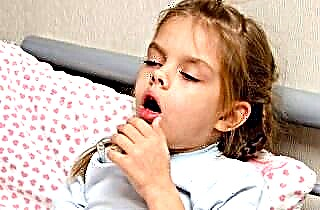 Tracheitis (inflammation of the trachea). With such an ailment, a distinct deaf and deep cough is heard.
Tracheitis (inflammation of the trachea). With such an ailment, a distinct deaf and deep cough is heard.- Croup (childhood respiratory disease) is accompanied by attacks of a dull barking cough and is usually diagnosed in children under three years of age. Often, others are added to this symptom: hoarseness of the voice, blue discoloration or pallor of the skin. For the most part, attacks are especially active at night, during sleep.
- Tuberculosis is another reason children cough. This disease is rarely diagnosed in children and is characterized by inflammation of the lower respiratory tract.
- With pneumonia, a dry, deaf cough may also occur. It occurs during the incubation period (when the child is infected, but the disease has not yet fully manifested itself) and then transforms into a wet cough. Moreover, the duration of attacks of deaf cough does not exceed 5 days.
 Depending on the duration of the cough, it can be chronic, lingering or acute:
Depending on the duration of the cough, it can be chronic, lingering or acute:
- The acute form in most cases lasts no more than 3 weeks. In this case, the attacks occur regularly and do not subside. Acute bronchospasm is characteristic, for example, of tracheitis.
- As for a lingering cough, it appears within a maximum of 3 months. In this case, bronchospasm has a fickle character - it disappears, then it resumes with renewed vigor. It can be observed both during the day and at night.
- The cough becomes chronic if it lasts more than 3 months. This is a direct result of an untreated cough or a complication of the inflammatory process.
Dry deaf cough
 This type of cough is an alarming symptom and is accompanied by difficult sputum discharge. However, it does not always need to be treated, as in some cases it is not caused by a disease. Quite often, bronchospasm is of a purely physiological nature. Your toddler can cough up to 15 times a day, for example, due to the high concentration of dust in the room.
This type of cough is an alarming symptom and is accompanied by difficult sputum discharge. However, it does not always need to be treated, as in some cases it is not caused by a disease. Quite often, bronchospasm is of a purely physiological nature. Your toddler can cough up to 15 times a day, for example, due to the high concentration of dust in the room.
Treatment for a physiological cough is not required. With prolonged and unreasonable use of antitussive drugs, it can even intensify and transform into a chronic form. Rehabilitation is needed only in cases when, in addition to coughing, other symptoms appear, and the child himself becomes lethargic, has a painful appearance.
It is quite simple to recognize a pathological cough. It will be indicated by the following signs:
- patient passivity;
- increased body temperature;
- blue lips;
- pallor of the skin;
- paroxysmal cough;
 shortness of breath and trouble breathing;
shortness of breath and trouble breathing;- sore throat and chest;
- sleep disturbance;
- lack of appetite and so on.
If you find at least one of these symptoms, then the cough is pathological. Especially often in this case, attacks are observed at night during sleep. In this situation, you need to consult a specialist.
To find out the cause of bronchospasm, we recommend performing a diagnosis. First of all, it is necessary to undergo an X-ray. It will help you learn about the condition of the bronchial tree and bronchi. An x-ray will allow you to identify inflammation in the lungs and see foreign objects in the airways.
But do not get carried away with this type of diagnosis, especially when it comes to very young children. Excessive radiation exposure on the child's body should be excluded if possible.
For diagnostic purposes, the spirometry method is used. It is needed to calculate the volume of inhaled air. As for other methods (including more radical ones), they, as a rule, are not applied in relation to young children.
Medication treatment
Before starting treatment for attacks of deaf cough, you should determine its cause. It is necessary to identify the disease that caused the bronchospasm. Only a pediatrician is able to correctly diagnose and select safe pharmacological drugs (self-medication in this case is prohibited, since the wrong drug will only make it worse). In addition, one should not forget about the age factor. It is he and the type of cough that determine the use of a particular drug.
What medications are used in the rehabilitation of young patients with deaf cough?
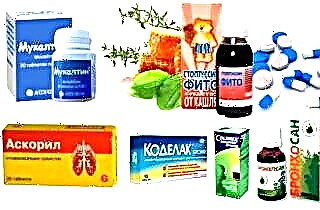 With tracheitis, when the trachea is inflamed, "Codeine" and "Libexin" are prescribed.
With tracheitis, when the trachea is inflamed, "Codeine" and "Libexin" are prescribed.- If the deaf cough is dry and unproductive, syrups based on breast collection, licorice root, and so on are used.
- Well liquefy and remove phlegm from the child's body "ACC", "Ambrobene", "Lazolvan".
- If bronchospasm is accompanied by ARVI, the following medications are used: "Doctor MOM", "Codelac Fito" and others.
- Antihistamines are prescribed only for allergies, when a cough is an allergic reaction of the body to an irritant.
- With viral tracheitis, Arbidol, Kagocel and other antiviral drugs help to cope well with attacks.
A few words about inhalation
 Inhalation with normal saline solution helps to quickly and accurately relieve cough without fever. For these purposes, special electronic devices are used - nebulizers. With their help, small granules of the drug fall exactly on the inflamed areas of the mucous pathways. As a result, bronchospasms weaken, breathing is normalized, and phlegm is removed from the body much faster.
Inhalation with normal saline solution helps to quickly and accurately relieve cough without fever. For these purposes, special electronic devices are used - nebulizers. With their help, small granules of the drug fall exactly on the inflamed areas of the mucous pathways. As a result, bronchospasms weaken, breathing is normalized, and phlegm is removed from the body much faster.
Do not forget about alkaline inhalation. Treatment of cough with this method involves the use of soda solution and mineral water. It is very easy to prepare a medicated soda solution. You need to add 3 teaspoons of soda to 200 ml of slightly warmed water and pour the cocktail into the nebulizer using a regular syringe. The procedure lasts no more than 8 minutes.
Good results are demonstrated by the treatment of cough with inhalations with Ambroxol. It is mixed with saline in the proportions indicated in the instructions. However, you can use such a drug only after consulting a pediatrician, since it has a number of contraindications.
Inhalation is used as an additional rehabilitation method and is not the main method of treating deaf coughing attacks.
Traditional medicine recipes
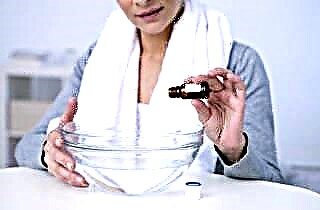 Preparing a healthy honey solution. Pour about 5 ml of calcium chloride solution into a container and mix with 10 mg of honey. Cover with a lid and heat in a water bath. We use it for inhalation.
Preparing a healthy honey solution. Pour about 5 ml of calcium chloride solution into a container and mix with 10 mg of honey. Cover with a lid and heat in a water bath. We use it for inhalation.- Tea tree based product. Bring the water in a saucepan to a boil and add a couple of drops of essential oil. The child should breathe in steam for no more than 10 minutes.
- A mixture of honey, glycerin, and lemon juice helps to significantly reduce the intensity of a deaf cough. It is necessary to squeeze the juice from two or three lemons, add 2 teaspoons of honey and one spoonful of glycerin to it. After you mix the cocktail thoroughly, give it to your baby one teaspoonful no more than 6 times a day.
- In case of very strong and intense attacks, we recommend giving the child a decoction made from viburnum fruits. To do this, pour the berries with water, put on medium heat and boil for 10 minutes. Next, the broth is filtered and cooled to room temperature. Add 3 tablespoons of honey and give the child half a glass 3 times a day.
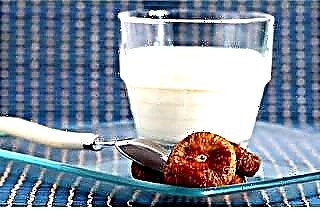 Do not forget about such delicious medicine as figs with milk. To prepare it, you need 200 ml of milk and several figs. It is necessary to boil the fruits in milk and give the child a decoction to drink throughout the day.
Do not forget about such delicious medicine as figs with milk. To prepare it, you need 200 ml of milk and several figs. It is necessary to boil the fruits in milk and give the child a decoction to drink throughout the day.- If the cough is dry, then it should be made wet. Cabbage juice with sugar forms well and removes phlegm. Prefer fresh juice. The medicine is taken orally in 1 teaspoon throughout the day.
- When treating a deaf cough (if there is no fever), chest rubbing can be performed. The massage is performed using goose fat. After the procedure, the little patient wraps himself in a warm towel and goes to bed.
- If the child's temperature is normal, you can try to put mustard plasters at night.
- An excellent remedy is hot foot baths for your baby.

 Tracheitis (inflammation of the trachea). With such an ailment, a distinct deaf and deep cough is heard.
Tracheitis (inflammation of the trachea). With such an ailment, a distinct deaf and deep cough is heard. shortness of breath and trouble breathing;
shortness of breath and trouble breathing; With tracheitis, when the trachea is inflamed, "Codeine" and "Libexin" are prescribed.
With tracheitis, when the trachea is inflamed, "Codeine" and "Libexin" are prescribed. Preparing a healthy honey solution. Pour about 5 ml of calcium chloride solution into a container and mix with 10 mg of honey. Cover with a lid and heat in a water bath. We use it for inhalation.
Preparing a healthy honey solution. Pour about 5 ml of calcium chloride solution into a container and mix with 10 mg of honey. Cover with a lid and heat in a water bath. We use it for inhalation. Do not forget about such delicious medicine as figs with milk. To prepare it, you need 200 ml of milk and several figs. It is necessary to boil the fruits in milk and give the child a decoction to drink throughout the day.
Do not forget about such delicious medicine as figs with milk. To prepare it, you need 200 ml of milk and several figs. It is necessary to boil the fruits in milk and give the child a decoction to drink throughout the day.
